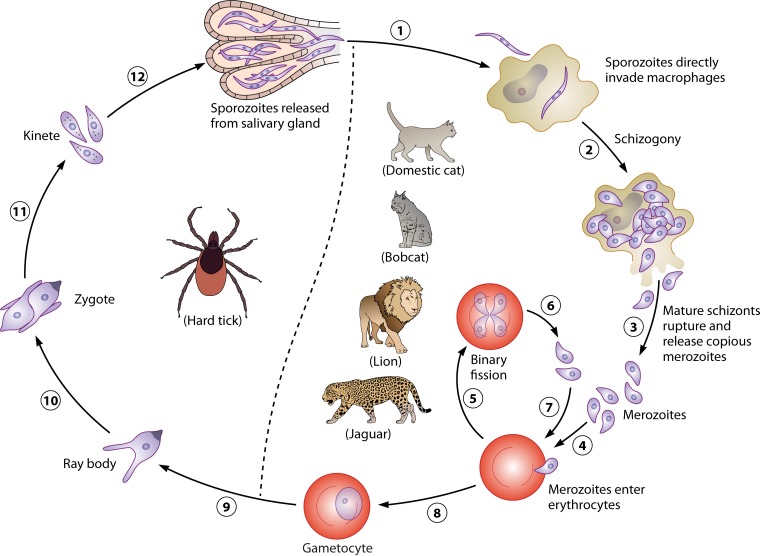FIG 3.
Schematic life cycle of Cytauxzoon felis. The life cycle of C. felis requires a hard tick vector as a definitive host and a felid host as an intermediate host. Both Dermacentor variabilis and Amblyomma americanum are competent vectors. Since there is no transovarial transmission, only nymphs and adults are infective to felids. All felids are capable hosts, but no other mammals are. Bobcats and domestic cats are the most common hosts. After inoculation by a tick vector during a blood meal (1), sporozoites directly enter macrophages of a felid host, in which they undergo schizogony (2), resulting in formation of mature schizonts that rupture the infected macrophages and release copious merozoites (3). Numerous enlarged schizont-laden macrophages occlude small blood vessels of various organs, which is responsible for acute cytauxzoonosis. Merozoites enter erythrocytes (4), undergo binary fission (5), and ultimately kill their host cells, resulting in release of merozoites (6). Merozoites enter other erythrocytes (7), and the asexual cycle continues. Some intraerythrocytic merozoites differentiate into gametocytes, which are infectious for a tick vector (8). In the tick host, the gametocytes develop into ray bodies (9) that fuse to form a diploid zygote (10) in the gut. Zygotes mature into motile haploid kinetes (11) that enter the tick's salivary glands, where they undergo multiple fission to produce numerous sporozoites that are infectious for a felid host (12).

